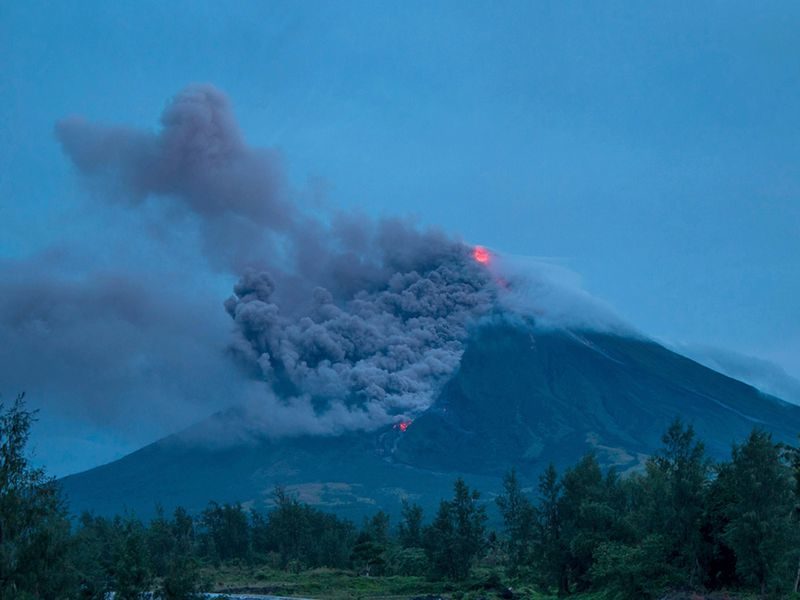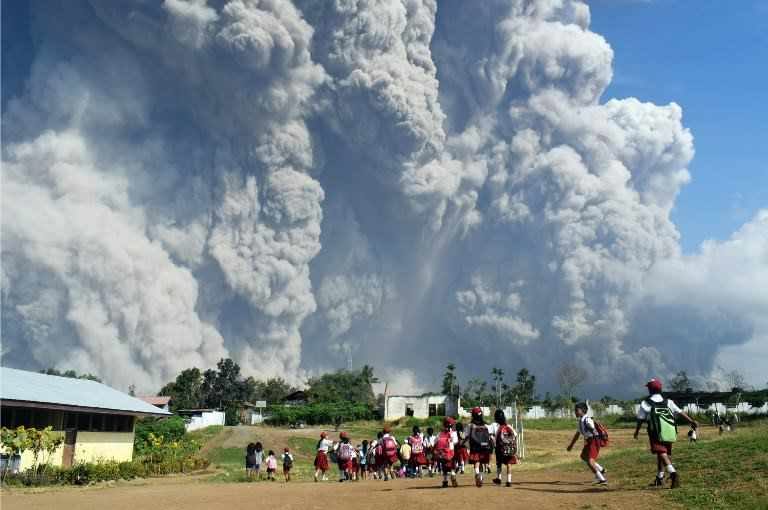
© Dan AmarantoLava cascades down the slopes of the erupting Mayon volcano in January 2018. Seen from Busay Village in Albay province, 210 miles southeast of Manila, Philippines.
A single volcano can change the world's atmosphere, even permanently, depending on the intensity of the volcanic eruption, a pollution expert said.
According to Mylene Cayetano, PhD, the head of the Environmental Pollution Studies Laboratory of the Institute of Environmental Science and Meteorology at University of the Philippines Diliman, on top of being a fiery spectacle of nature, volcanoes are a force to be reckoned with.
"A single volcano has the ability to completely change the world's entire atmosphere, maybe even permanently," Cayetano said in statement.
Cayetano issued the statement in light of the Philippine Institute of Volcanology and Seismology (Phivolcs) statement that Mayon's restiveness is still far from the peak of explosion, which may come in the coming weks.According to Cayetano, Southeast Asia is one of the most geologically active regions, of the world, if not the most, and had been home to the most destructive and powerful volcanic eruptions in history. Mayon, one of the world's renowned volcanoes because of its almost-perfect conical shape, is the most active volcano in the Philippines.


Comment: See also the map below depicting the ever increasing volcanic activity around the planet reported on Sott for the past year: